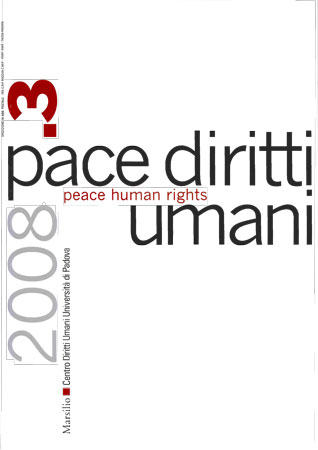Raccolte

La Dichiarazione universale dei diritti dell'uomo e la Costituzione della Repubblica Italiana. Giudizio di equità e identità tra equità e diritto.
- Contenuto in
- Pace diritti umani - Peace Human Rights, 3/2008
- Tipologia pubblicazione
- Articolo / Saggio
- Pagine
- 7-24
- Lingua
- IT
The Universal Declaration of Human Rights and the Constitution of the Italian Republic. Combining Equity and Law for the Fair Judgement
Paolo Maddalena
The author argues that there is a strict relationship between the Universal Declaration of 10 December 1948 and the Italian Constitution which entered into force the 1st January of the same year. The ratio of the latter combines welfare and the rule of law, in consonance with the ratio of the Universal Declaration, in particular with the principle of interdependence and indivisibility of all human rights. The Universal Declaration provides the cultural and axiologic background to the Italian Constitution. Moral values, like human dignity, freedom, equality, brotherhood are absorbed by positive law in force at international and national level. In accordance with Article 1 of the Universal Declaration, Article 2 of the Italian Constitution assumes that fundamental rights and freedoms are inherent to the human being, then the value of the human person must come first with respect to the state. The author highlights four pillars of the Constitution, respectively the recognition of human rights, education and culture, the right to work and social policies, equality as the collant of all principles and norms. The last part of the essay is devoted to the challenge of ius aequum to improve the Italian case law, and to the features of the State-community as distinct and more comprehensive than the state-legal system.

